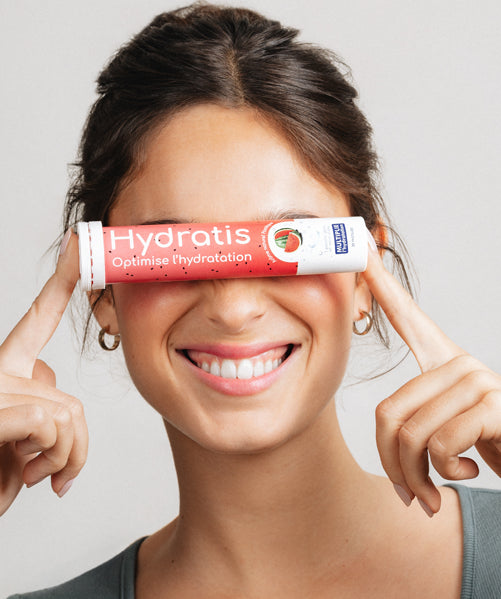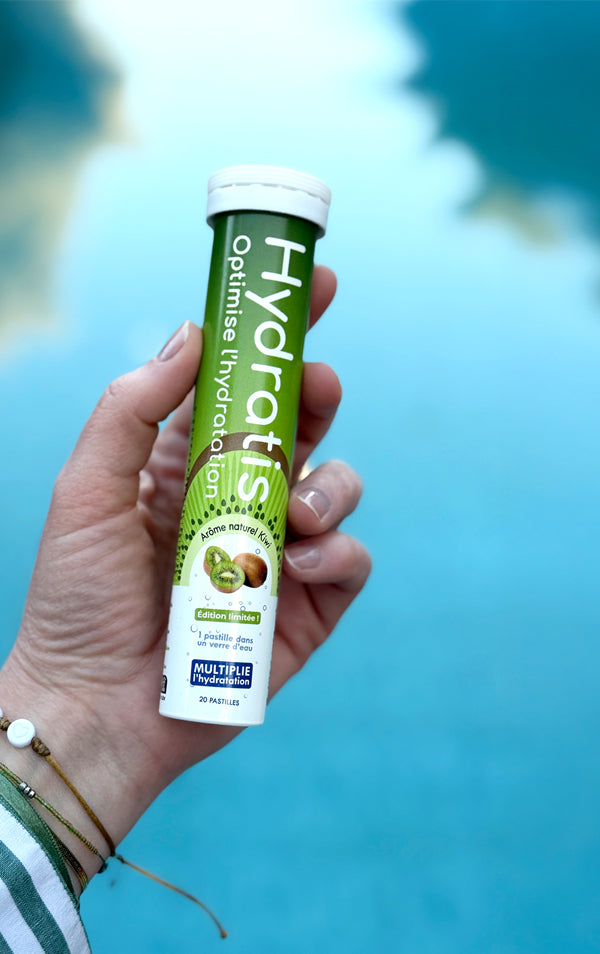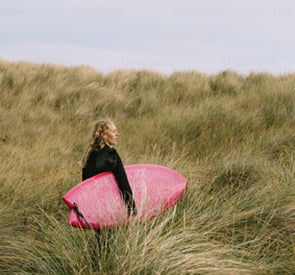What is a hypertonic drink?
A hypertonic drink has a higher concentration of dissolved solutes (sugars and electrolytes ) than blood. It draws water from your body, which is less concentrated, through osmosis. This causes water from the bloodstream to be absorbed by the intestines. This slows down the body's absorption of water, leading to temporary dehydration . This drink contains high levels of carbohydrates and minerals to replace those used during prolonged, intense exercise.
Difference between hypertonic, isotonic and hypotonic drinks
A hypotonic drink contains lower amounts of sugars and electrolytes compared to blood, which maximizes water absorption into the bloodstream and therefore rehydration . This solution is suitable for athletes who need to hydrate without a significant carbohydrate intake and is less well absorbed than an isotonic solution, but it can be beneficial in hot weather.
An isotonic drink contains particles in quantities similar to those found in your body, allowing for steady absorption. It's a good compromise between hydration and energy.
A hypertonic drink, on the other hand, contains particles in a higher quantity than blood. It provides a lot of energy , but is less effective for rapid hydration.

The benefits of different types of drinks:
|
Types of drinks |
Osmolarity (mOsmo/kg) |
Carbohydrates (g/100ml) |
Particle concentration relative to blood |
Hydration |
Energy supplied |
Recommended time to take for an effort |
|
Hypotonic drink |
< 270 |
< 3 |
Weak |
+++ |
Ø |
Before, during and after |
|
Isotonic drink |
270-330 |
6-8 |
Similar |
+ |
+ |
During |
|
Hypertonic drink |
> 330 |
> 15 |
Raised |
- |
+++ |
Before or after |
How do hypertonic sports drinks work?
Hypertonic sports drinks contain a high concentration of carbohydrates and electrolytes. They are generally consumed after prolonged and intense exercise ( such as marathons and triathlons ) to replenish muscle glycogen stores. Their high carbohydrate concentration can make them difficult to absorb during sustained exercise. However, they can serve as a "fuel" before exertion.

Hypertonic drinks can be composed of simple sugars (glucose and fructose) and complex sugars (maltodextrin) for a rapid and sustained release of energy. Before exercise, it's therefore essential to stay well-hydrated if using hypertonic solutions!
Hypertonic solutions are less well absorbed than isotonic solutions. They are therefore not effective for rapid hydration during prolonged exertion, especially in high heat.
If consumed during intense exercise, hypertonic solutions can slow gastric emptying and cause digestive problems, such as bloating and cramps .
In what cases should a hypertonic drink be used?
Before a long effort, to "refuel" with carbohydrates
A hypertonic solution can be consumed in the days leading up to a marathon, triathlon, or any other prolonged endurance exercise. It helps replenish muscle glycogen stores, which improves performance and delays the onset of fatigue . It is therefore important to allow sufficient time before starting the activity to avoid digestive problems.
After an intense effort, to replenish energy reserves
Hypertonic solutions are particularly recommended in the hours following prolonged and intense exertion. They allow for the rapid replenishment of energy reserves and promote recovery by providing essential sugars and minerals.
This drink is not recommended for short bursts of activity or in very hot weather.
It is best to avoid hypertonic solutions during exercise, especially in hot weather or for short periods of activity. Their high solute content slows water absorption and can lead to digestive problems. In these situations, and depending on the temperature, isotonic or hypotonic drinks are more suitable for ensuring rapid and effective hydration.

Advantages and disadvantages of hypertonic drinks
Benefits
-
Rapid energy replenishment: thanks to their high carbohydrate content, they allow for a rapid replenishment of glycogen reserves after physical exertion.
-
Electrolyte intake (including sodium): Electrolyte intake helps to compensate for losses due to perspiration, especially after prolonged exertion.
Disadvantages
-
They are not very hydrating: due to their high mineral concentration, they are absorbed more slowly than isotonic and hypotonic solutions. They are therefore less effective for rapid hydration.
- They can cause digestive problems if used incorrectly: indeed, if consumed during intense activity, they can cause digestive problems such as stomach aches and bloating.
FAQ – Answers to frequently asked questions
What is a hypertonic drink?
This solution has a higher concentration of particles (sugars and electrolytes) than blood. It is less effective for rapid hydration but provides a significant energy boost.
What is the difference between hypertonic, isotonic and hypotonic drinks?
A hypertonic drink has a higher particle content than blood, making it less effective for rapid hydration and very energy-dense. An isotonic drink has a solute concentration similar to that of blood, offering a good balance between hydration and energy. A hypotonic drink contains fewer particles than blood, maximizing rehydration and providing low energy.
When should you drink a hypertonic beverage?
A hypertonic drink can be consumed before prolonged exertion to optimize athletic performance, or afterward to promote better recovery. It should be avoided during physical activity or in hot weather.
Should hypertonic drinks be incorporated into one's sports practice?
The integration of hypertonic solutions into your sports routine depends on the activity, its duration, and its intensity. They are useful for intense and prolonged efforts, helping you maintain good energy levels. To choose the ideal drink, it's necessary to understand your hydration and energy needs . However, they can cause digestive problems if used incorrectly. Amateur athletes can hydrate with water alone, or even with isotonic solutions. Hypertonic drinks are therefore not essential for all sports.
Bibliography
Ashurst, P.R., & Hargitt, R. (2009). Product development of new soft drinks and fruit juices. In Elsevier eBooks (pp. 1‑19). https://www.sciencedirect.com/science/article/abs/pii/B9781845693268500013
Skarlovnik, T., La mut, A., Hostnik, G., Gole, B., & Bren, U. (2024). Osmolality and Tonicity of Isotonic Beverages. Foods (Basel, Switzerland), 13(10), 1483. https://doi.org/10.3390/foods13101483
Raizel, R., Coqueiro, AY, Bonvini, A., & Tirapegui, J. (2019). Sports and Energy Drinks: Aspects to Consider. In Elsevier eBooks (pp. 1‑37). https://doi.org/10.1016/b978-0-12-815851-7.00001-2






